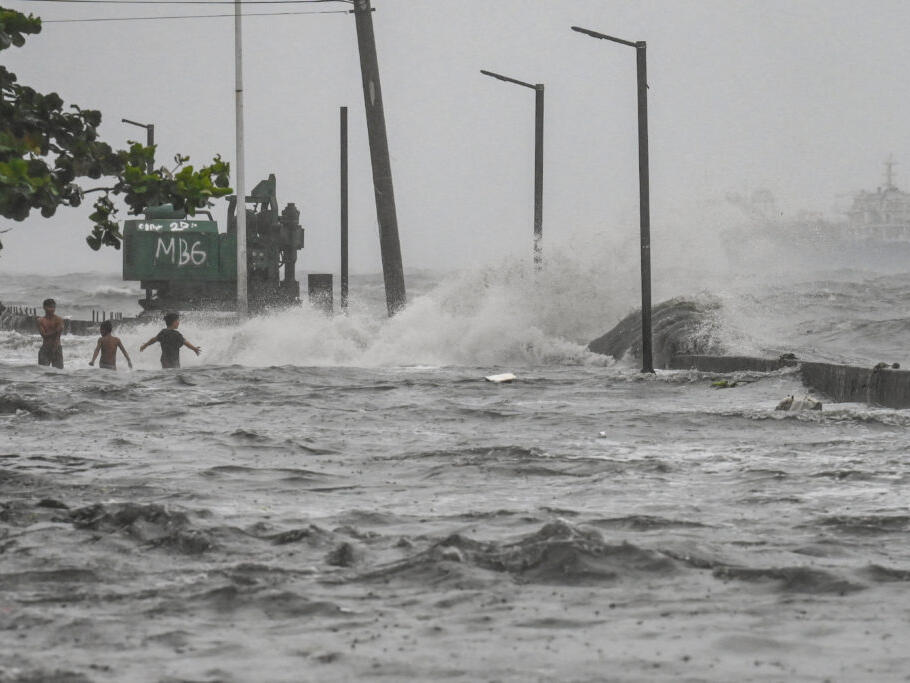Physical Address
304 North Cardinal St.
Dorchester Center, MA 02124
Physical Address
304 North Cardinal St.
Dorchester Center, MA 02124

Manila, Philippines, is reeling under the impacts of Tropical Storm Yagi, which has resulted in severe flooding and landslides across the northern regions of the country. Since hitting the northeastern province of Aurora late Sunday, the storm has claimed the lives of at least 14 individuals. The authorities have declared a suspension of classes and government work in the densely populated areas, particularly in the capital region, to ensure public safety.
The weather bureau reported that Yagi made landfall in Casiguran and quickly intensified, boasting sustained winds of 85 kilometers per hour (53 miles per hour) and gusts reaching up to 105 kph (65 mph). As it continues to move northwest at a speed of 20 kph (12 mph), there are concerns it may transform into a more powerful typhoon before moving towards southern China within the next couple of days.
Local officials have confirmed that the majority of the fatalities resulted from landslides and drowning incidents. A particularly tragic event occurred in Antipolo City when landslides struck two makeshift homes, resulting in the deaths of three individuals, including a pregnant woman. Additionally, four other villagers were confirmed dead due to flooding in nearby swollen creeks, according to disaster-response officer Enrilito Bernardo Jr.
“The creeks overflowed, and a portion of the hillside collapsed due to the relentless rains,” he explained, illustrating the severity of the situation.
In separate incidents, landslides claimed the lives of four people in Cebu City and Northern Samar province. In the eastern city of Naga, three more individuals died—two from drowning and another due to electrocution.
With the storm’s advance, warnings were issued across a broad area of Luzon, the Philippines’ most populated island, including metropolitan Manila. The decision to halt classes at all educational levels and suspend most government operations aimed to protect citizens from hazardous conditions.
Residents living along the Marikina River’s banks received flood warnings due to the rising water levels. Sirens were sounded to alert thousands of locals to prepare for potential evacuations should the river continue to swell.
In Cavite province, located south of Manila, and Northern Samar, coast guard teams were deployed to assist residents trapped in rapidly rising floodwaters. Using rubber boats and ropes, they successfully rescued numerous individuals engulfed by waist- and chest-high floods.
Sea travel has also been disrupted, with temporary halts in operations across several ports, leaving over 3,300 passengers and cargo workers stranded. Numerous domestic flights have been canceled as a result of inclement weather conditions.
A training vessel, M/V Kamilla, experienced a severe incident while anchored off Navotas port when it was struck by a vessel that lost control amidst powerful waves. The impact caused damage to the bridge of M/V Kamilla, which later caught fire, necessitating an emergency abandonment by its crew and cadets. The Philippine coast guard reported that a passing tugboat managed to rescue 17 members from the distressed ship, while one individual swam to safety.
Heavy rainfall has also raised water levels in the Ipo Dam in Bulacan province, prompting authorities to plan a controlled release of water. They assured local communities that this action would not pose a risk to downstream areas.
The Philippines is accustomed to facing approximately 20 typhoons and storms annually due to its location in the “Pacific Ring of Fire,” where volcanic eruptions and earthquakes are common. The country remains one of the world’s most disaster-prone regions.
Historically, the Philippines has endured devastating storms, including Typhoon Haiyan in 2013, which resulted in over 7,300 people being declared dead or missing, destroying entire villages and displacing millions.
As the nation grapples with the aftermath of Tropical Storm Yagi, the hope is for swift recovery and minimal additional impacts. Emergency services continue to monitor the situation closely.
Source: AP



